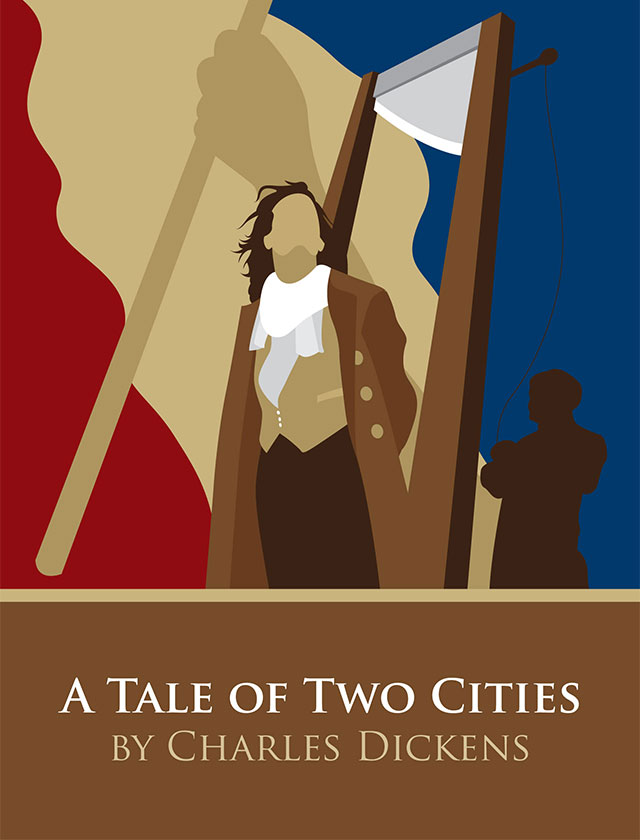A Tale of Two Cities
by Charles Dickens
Introduction and Background
Charles John Huffam Dickens is one of the most famous of all English authors, and the most highly regarded author of the Victorian period. He was born February 7, 1812, in Portsmouth, England. He came from a lower-class family with eight children. His father was actually thrown in debtor’s prison at one point during Dickens’s childhood, and Dickens began working at the age of 12 in order to help support his family and pay off his father’s debt. As a member of the lower socioeconomic class, Dickens was keenly aware of class conflicts, and class issues played an important role in all of his novels.
Dickens primarily wrote contemporary fiction, and most of his novels were set in Victorian times in Dickens’s England. However, he wrote two pieces of historical fiction, and A Tale of Two Cities, set against the backdrop of the French Revolution, is one of these works. Dickens was not a novelist in the traditional sense. Though he was a professional writer, his works were not published as books, but came out as installments in a series of periodicals. Dickens had long written in installments and was reportedly paid by the word, which has prompted some observations that his writing is too wordy. A Tale of Two Cities marked a departure from Dickens’s previous writing for traditional periodicals. He had a dispute with his publishers and decided to begin his own periodical, All The Year Round. A Tale of Two Cities was one of the first stories to be published in the periodical, and it ran from April to November of 1859.
While A Tale of Two Cities is clearly inspired by the French Revolution and the political events surrounding the Revolution, it is critical for the reader to keep in mind that it is not just a political novel; it is also the story of a love triangle. Lucie is the love object for multiple characters in the novel, but is primarily loved by two men: Charles Darnay, who eventually becomes her husband, and Sydney Carton, who offers to give up his life for her happiness. Dickens was...
Sign up to continue reading Introduction and Background >